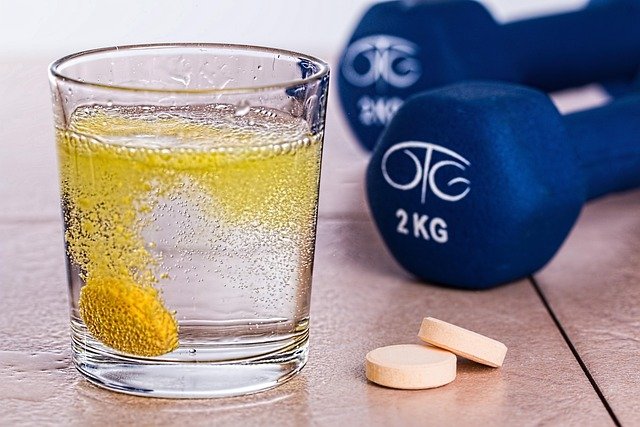Dietary and Hydration Adjustments That Influence Nasal Secretion
Nasal secretion varies with fluid intake, food choices, and the surrounding environment. Hydration, humidity, certain meals, and exposure to allergens or pollutants can change mucus consistency and congestion levels. This article outlines practical dietary and hydration adjustments that can influence nasal mucus and related symptoms.

How does hydration affect nasal mucus?
Hydration directly influences the viscosity and movement of nasal mucus. When the body is well hydrated, mucus tends to be thinner and easier for the cilia to clear, which can reduce the feeling of congestion and postnasal drip. In contrast, dehydration or prolonged exposure to low-humidity environments can thicken mucus and make clearance slower, increasing the sensation of a runny or blocked nasal passage. Using a humidifier in dry climates or during winter heating, drinking regular fluids, and inhaling warm steam briefly can help maintain mucosal hydration and support natural mucus transport.
What dietary factors change mucus production?
Some people notice changes in nasal secretion after certain foods, but strong generalizations are not supported by consistent evidence. Dairy products are often reported as making mucus feel thicker for some individuals, yet clinical studies do not show a clear increase in mucus production from dairy in most people. Spicy foods containing capsaicin can temporarily increase nasal secretions and liquid mucus, which many find clears congestion rather than worsening it. High-salt diets may affect mucosal swelling in predisposed individuals, while alcohol can dilate blood vessels and sometimes increase nasal blood flow and secretions. Food intolerances or specific allergies, however, can trigger true allergic rhinitis and measurable increases in mucus; identifying individual triggers and working with a clinician or dietitian can help manage diet-driven symptoms.
How do allergens, pollutants, and humidity act as triggers?
Allergens (like pollen, dust mites, and pet dander) and airborne pollutants (such as smoke or vehicle exhaust) can provoke nasal inflammation and increased mucus production in sensitive people. This often presents as clear watery discharge, nasal congestion, and postnasal drip. Humidity influences these processes: low humidity dries mucous membranes and may thicken secretions, while high humidity can promote mold growth and dust mite populations, increasing allergen exposure. Reducing indoor pollutants, using air filters, washing bedding regularly, and managing indoor humidity between roughly 40–60% can help limit exposure to common triggers and reduce episodes of excessive nasal secretion.
When do congestion and sinus infection require treatment?
Most episodes of increased nasal mucus resolve with self-care, but persistent or severe symptoms may need medical evaluation. Signs that suggest a possible sinus infection or a need for professional care include persistent congestion or facial pain lasting more than 10 days, a high fever, sudden worsening after initial improvement, or symptoms that significantly impair sleep or daily activities. Thick or discolored discharge alone is not a definitive indicator of bacterial infection. A healthcare professional can assess for sinus infection, complications, or underlying allergic rhinitis and recommend appropriate treatments, which may include targeted medications or further testing.
This article is for informational purposes only and should not be considered medical advice. Please consult a qualified healthcare professional for personalized guidance and treatment.
What role do decongestants, antihistamines, and steam play?
Over-the-counter decongestants can provide short-term relief from nasal congestion by reducing blood flow to nasal tissues; oral decongestants and topical nasal sprays work differently and both have cautions. Topical nasal decongestant sprays can cause rebound congestion if used longer than a few days, while some oral decongestants may not be appropriate for people with certain cardiovascular conditions. Antihistamines are effective when allergies drive mucus production and postnasal drip; newer-generation antihistamines tend to cause less drowsiness. Steam inhalation or warm showers can temporarily loosen mucus and ease breathing but are supportive measures rather than long-term solutions. Discussing the choice and duration of any medication with a clinician or pharmacist is advisable.
Practical prevention and trigger management
Simple adjustments can reduce bothersome nasal secretion. Maintain adequate daily fluid intake, use humidification when indoor air is very dry, and minimize exposure to known allergens and pollutants. Track foods that seem to correlate with symptoms; if you suspect a food allergy or intolerance, seek medical testing rather than self-diagnosing. Good nasal hygiene—saline rinses or sprays—can support mucus clearance without medication. For recurrent or severe symptoms, a healthcare provider can evaluate for sinus disease, allergic conditions, or other causes and recommend evidence-based treatments.
Nasal secretion responds to a combination of personal factors (such as hydration and diet) and environmental influences (including humidity and air quality). Individual responses vary, so observe which adjustments bring meaningful improvement and consult professionals when symptoms persist or worsen.






